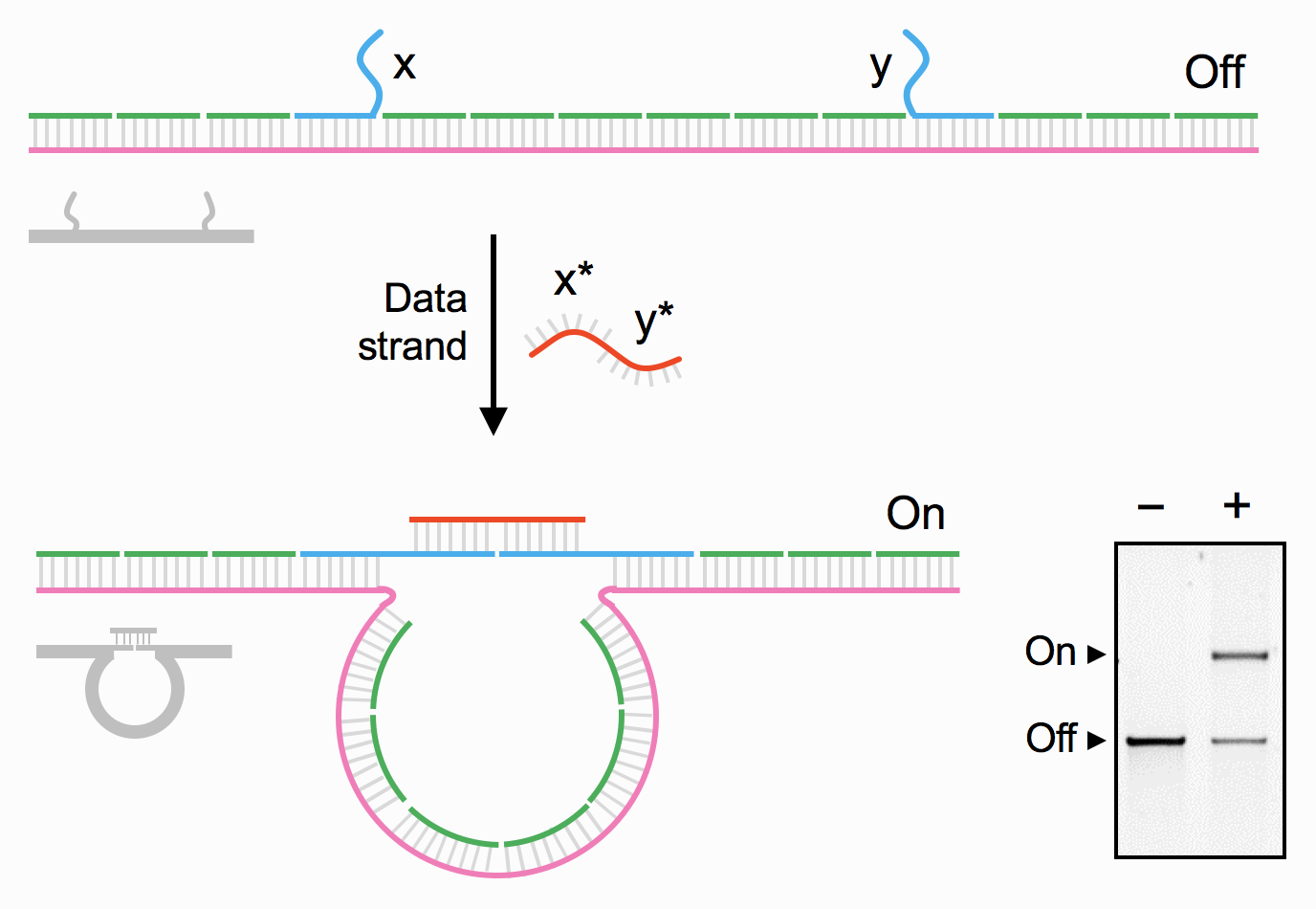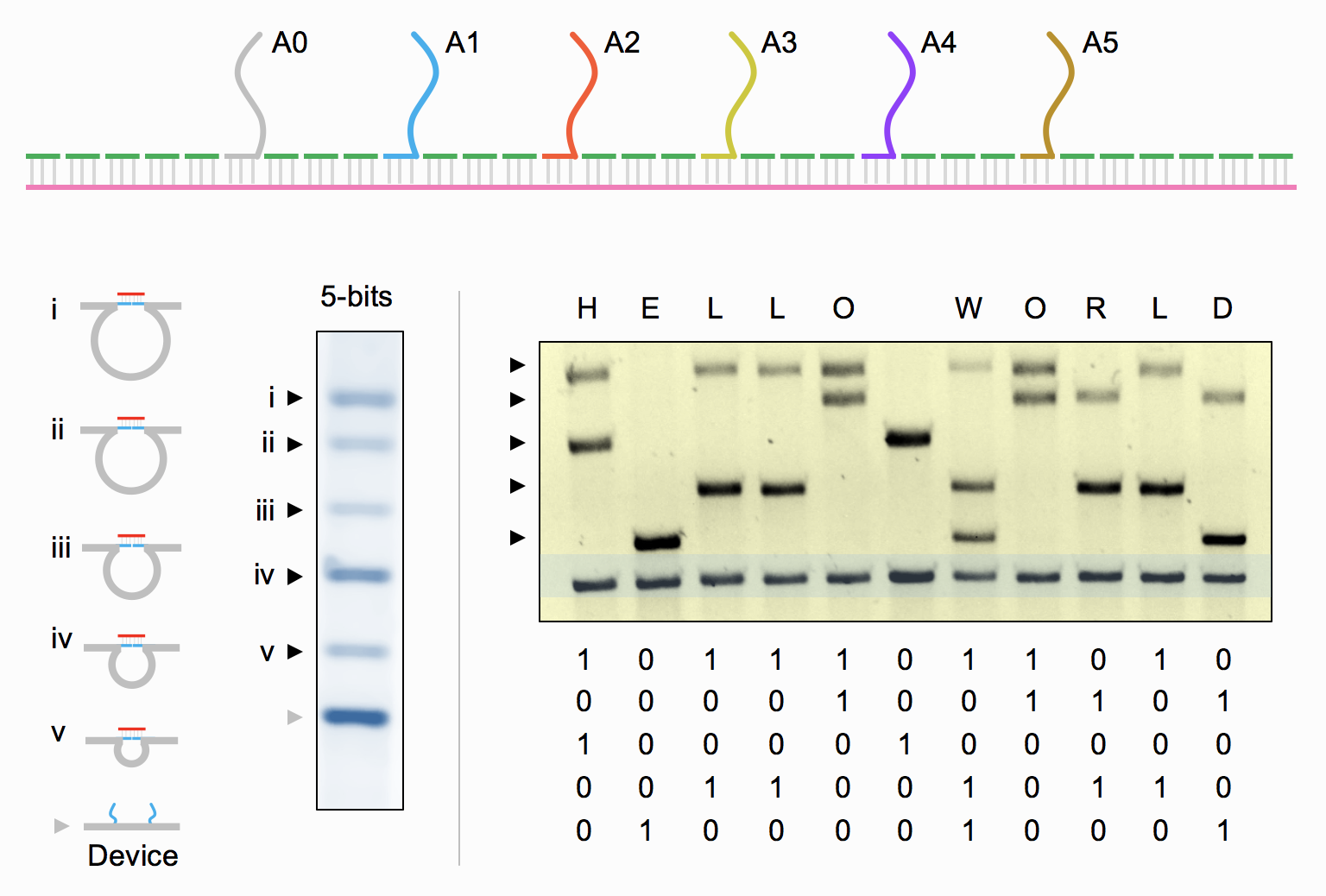I started a side project during my post doc days at Albany, and called it the DNA memory device. We were working with DNA nanoswitches, which can bind specific nucleic acid sequences, resulting in specific bands on a gel. We were using this as a biosensing technique. My "just for fun" side project was to use the same strategy to encode data into such DNA nanostructures and read it out using agarose gel electrophoresis. We designed a multi-input nanoswitch that can bind up to 5 different DNA input strands. Each input creates a loop and the different-sized loops migrate differently on a gel resulting in a 5-bit output (design is shown in the figure on the right). We showed that we can store alphanumeric characters as 5-bit codes in these nanoswitches. By using a process called DNA strand displacement, we also made this a rewritable system. That is, once you encode the information, you can add DNA "eraser" strands that remove the input strands from the nanoswitches, and thus erase the pre-written bits (the loops revert back to the linear state). We were also able to re-write information in the same set of nanoswitches. My favorite result from this project is where we wrote HELLO WORLD, erased it completely, and rewrote GOOD BYE using the same nanoswitches (see figure).
Then came the time to publish this. The once cheesy, half-baked idea now took a full form as a well-characterized concept, with complete results showcasing the efficiency of the memory system. I was happy that I convinced my post-doc advisor that this was now a worthy project that could be published. We even made a bet as to whether we will succeed in publishing this in a journal with an impact factor >5 (let's save the impact factor importance argument for later). This was my first research paper as a corresponding author and I was characteristically exuberant about getting this in a top journal (and willing to go through multiple rejections). So I did what I think most academics do: I started at the top of the food chain of journals and went down the ladder as I got rejected. After three rejections from first-tier journals, I submitted the article to a well-known "Nano" journal. I was so excited to see that the paper was sent out for peer review. I just wanted this to get past the editor so we have a real chance to know what our peers think of this paper. Three weeks went by and we received the decision email: "Rejected". I went through the reviewers' comments and they were all positive but the paper was still rejected. One reviewer mentioned this was suitable after minor changes but indicated a different journal name (not the one we submitted to). We wrote to the journal about the apparent mistake, and they reversed the decision. While we waited to see a reversed "accepted" decision, the journal sent us a "revise and resubmit" option saying it will be considered as a new manuscript with further peer review.
While it seemed like the straight forward option to go back and submit again to the same journal, I was "delirious" and wanted to submit the paper to a different journal, a higher level one at that. Journals do not always have to get the upper hand at authors and I did not want to succumb to that trend. After hours of discussions and arguments with my advisor, I convinced him of submitting this to a different journal. It was sent out for peer review, and three weeks later, the paper was accepted with minor revisions! It was the best moment of my academic life! I knew I would tell people about this for years to come, how I decided to ditch a potential acceptance for a better journal, to show authors don't always have to bend down to journals, and succeeded in that. And to top it off, I submitted a cover figure for our paper and that was accepted too! Our paper came out in all its glory in the journal Nucleic Acids Research, and was featured on the cover of the October issue of 2017.
Read the article here to find out more.


